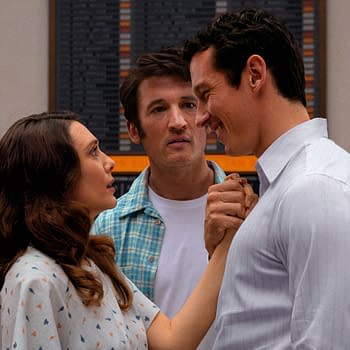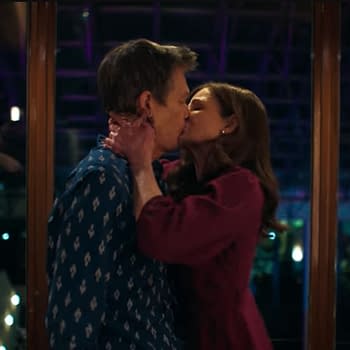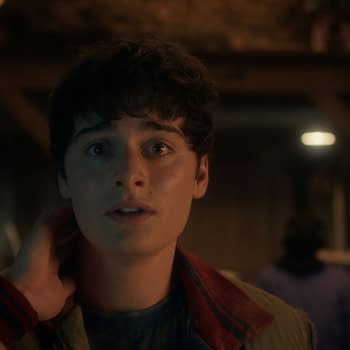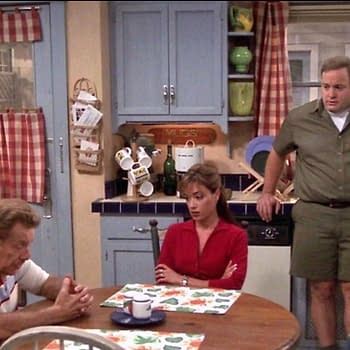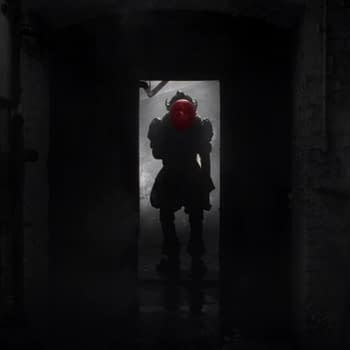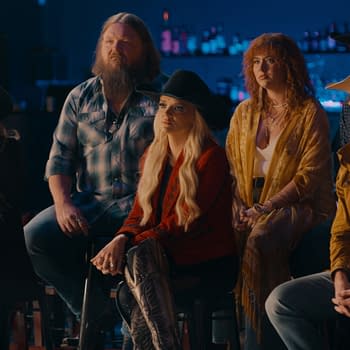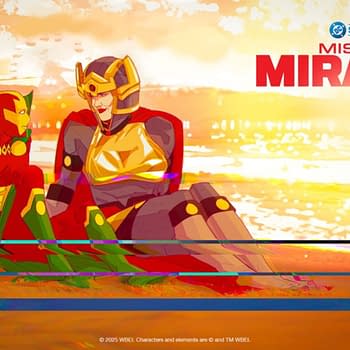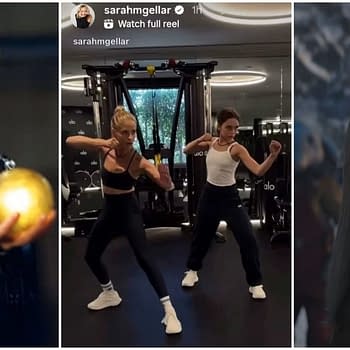Posted in: FX, Movies, TV, What We Do In The Shadows | Tagged: exclusive, hellraiser, interview, Paul Jones, the witcher, what we do in the shadows
What We Do in the Shadows Prosthetic Makeup Designer Talks Career
Paul Jones (What We Do in the Shadows) reflects on his career in makeup and prosthetics, learning from legends in the industry, and more.
Few could have imagined living the dream the way prosthetics makeup designer Paul Jones has from meeting the legends he grew up watching, working with him, and becoming one himself in his field with four decades of experience in Hollywood. From working on horror franchises like Hellraiser, Waxwork, Wishmaster, Blade, Chucky, Resident Evil, Ginger Snaps, The Thing (2011 prequel), and Saw, among his impressive nearly 110+ filmography to recent works like Poor Things (2023), Asteroid City (2023), and FX's What We Do in the Shadows. Jones spoke to Bleeding Cool on how Hollywood has embraced CG and practical effects expanding new possibilities in film and TV, the biggest career challenge, future, and his biggest influences.
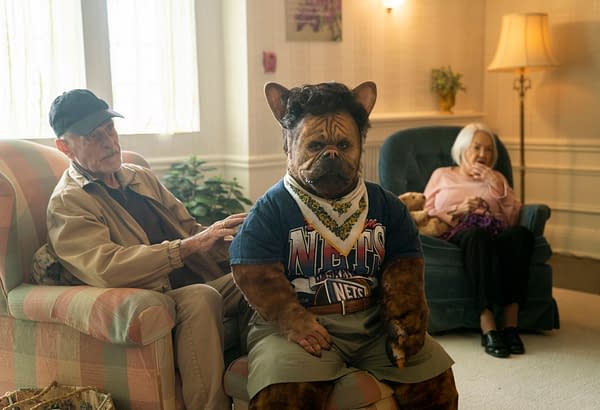
What We Do in the Shadows Prosthetics Makeup Designer Paul Jones on Learning from the Best
Bleeding Cool: You've seen the evolution where productions have leaned on practical effects and others may lean more on the CG. We still see some over-the-top effects in your work, like 'What We Do in the Shadows' and your work on 'The Boys', which is wonderfully excessive on special effects. What have you noticed over the years from the industry, have people leaned more practical or CG?
It's funny you say that because I've been working professionally since the 80s. When I started, the only option was optical or practical effects. When CG came along, it was like, "Oh my God! We're all going to be out of a job!" No, what's happened is our technology evolved at the same time as generations of directors have come into the mix. We have directors coming in, watching movies in the 80s, seeing all this practical stuff, and they can enter a film industry on the surface that seems to rely on digital.
They've gone, "No, we know these prosthetics guys, and their technology has kept up with the industry. They're able to produce much more realistic things." The great beauty is we don't have to 100 percent rely on them, so we can build a practical creature, and then we can augment it with CG instead of having it be one or the other with hybrids. I did a little thing with a famous director in Toronto, and he believed no one effect is done with one technology. It's always a mixture of multiple disciplines, not only with prosthetics people in general. We are busier, have a bigger toolbox to play with, and are not the only person on set. We can create something everyone's happy with and if there are things they want to tweak, they don't solely lean on us to solve the problem. We get an amazing CG team to come in and go, "We can do this, and we can do that." It's more of a collaboration now, whereas when CG first came into fruition, like 20 years ago, we all thought we were losing our jobs, and it's been the opposite. I haven't been busier, so it's great.
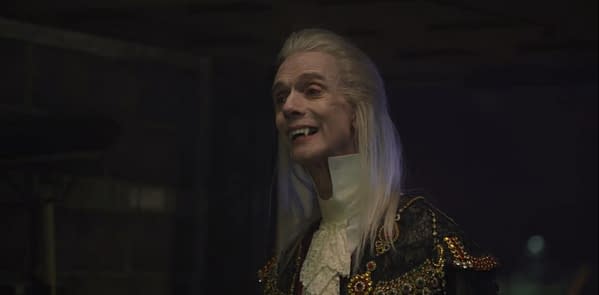
We've seen costumes take hours to apply on actors, but now we have productions that adopt motion capture on CG characters. Are there things practical effects can do that perhaps CG technology hasn't caught up with? Has there been more of an ebb-and-flow hybrid concept?
It's been equal because it comes down to a personal choice from the filmmakers. Some filmmakers go CG across the board, and others may go practical. If there's something we can't do, we'll get the CG guys to help. Some say, "I want nothing but rubber in my frame." It's a personal choice. The great thing is imagination drives everything. What was limited before with what we could do is now, is possible. Nothing is off the table now, and everything's back. It's like, no matter what you can come up with between prosthetics, special effects, or visual effects, we can achieve it. That's the trick is to keep it original and keep it entertaining. That's where the driving forces of technology will be, whatever it will be. If the movie isn't fun, interesting, or engaging, it doesn't matter how you build the creature, it's the audience who will get bored.
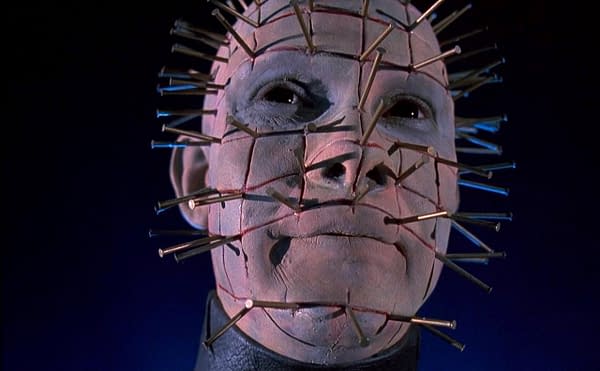
What was the biggest challenge in your career you pulled off?
I was talking about some of this today. I was fortunate to work for a small company in London that did the Hellraiser movie. I started making tea and painting duck wings. That was my first job in the film industry. Within five years, I was redesigning and applying the Pinhead makeup for 'Hellraiser 3' [1992]. It was a quick learning curve, but I did this. I call it a "job," but it's my hobby, and I get paid for it. It was all about doing the work. Working in the film industry was never the final goal for me. It was about doing the work.
The biggest challenge has been transitioning from when I left England to Canada from being an employee to becoming an employer. Running a shop is much harder than working in a shop. When I say "shop," I mean prosthetics workshop. What's happened over the last 30 years living in Toronto, I had a lot of success as a shop owner and prosthetics designer, but I had ups and downs with running a workshop. It's not fun because I lost sight of why I did this for a living, to make monsters.
What's happened now with 'Shadows' officially being my last workshop show, I'm able to do more freelance work now. Last year, I worked with a friend in the UK, and I worked on 'Asteroid City' [2023]. I worked on 'Poor Things' [2023] and did some stuff for 'The Witcher.' It was great to be part of a team rather than be the leader and I'm looking forward to that in the future to help someone else. Not to say I'm never going to design a movie again, but it's not my go-to now. I have those skills if I need them, but the project would have to be special for me to want to hire artists, sit in an office, and send emails all day instead of sticking my hands in buckets of blood. That's why I got into this industry.
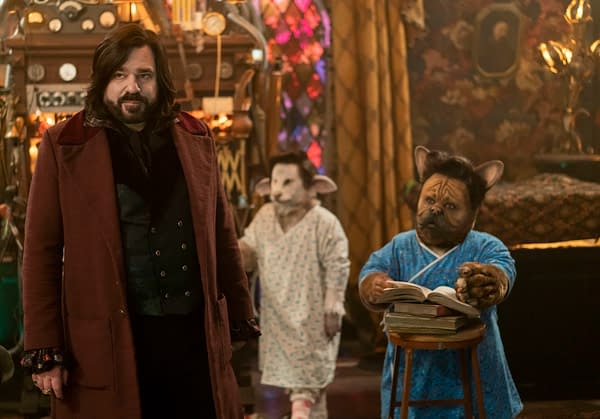
What were your biggest influences in your career?
I'm a Ray Harryhausen kid, so I remember seeing 'The 7th Voyage of Sinbad' [1958] when I was seven at the cinema, so fantasy was my driving force. It wasn't until 'Star Wars' [1977] that I started seeing more of the behind-the-scenes how they did it. I'd see snippets of masks and gloves pulled on people when I was young. The main thing for me was seeing 'The Making of Thriller' with Rick Baker because that showed me this is possibly a career path and gave me the impetus to push my hobby further, I thought I would take it.
In the industry, Dick Smith, I've been lucky to work with a lot of my inspirations. I did a film with Tom Savini, and we're still friends. I was also fortunate to work with Stan Winston, rest in peace. That was probably the biggest thrill was Stan and I gluing on makeup together. Talk about intimidating! Rick Baker, Craig Reardon, Greg Cannom, and Steve Johnson are great. These are the guys I was reading articles in Fangoria when I was 15, cut to 10 years later, and I'm meeting them. A couple of years after that, I'm working with them. I would never have, as a 15-year-old boy, thought I'd be sitting here, talking about my almost 40-year career in the film industry, making monsters. It felt organic and natural, and it is my vocation. I count my blessings every day.







